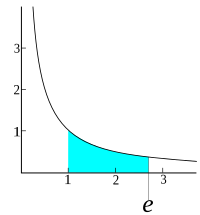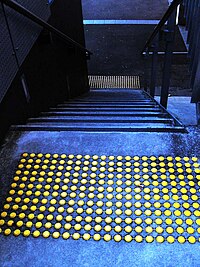
Reorganization of thalamocortical connections in congenitally blind humans
Sign Up to like & getrecommendations! Published in 2022 at "Human Brain Mapping"
DOI: 10.1002/hbm.26192
Abstract: Cross-modal plasticity in blind individuals has been reported over the past decades showing that non-visual information is carried and processed by ‘visual’ brain structures. However, the structural underpinnings of cross-modal plasticity in congenitally blind individuals… read more here.
Keywords: connectivity; thalamocortical connections; cross modal; blind individuals ... See more keywords

Decoding Natural Sounds in Early “Visual” Cortex of Congenitally Blind Individuals
Sign Up to like & getrecommendations! Published in 2020 at "Current Biology"
DOI: 10.1016/j.cub.2020.05.071
Abstract: Summary Complex natural sounds, such as bird singing, people talking, or traffic noise, induce decodable fMRI activation patterns in early visual cortex of sighted blindfolded participants [1]. That is, early visual cortex receives non-visual and… read more here.
Keywords: natural sounds; congenitally blind; blind individuals; early visual ... See more keywords

What determines the speed of speech recognition? Evidence from congenitally blind adults
Sign Up to like & getrecommendations! Published in 2018 at "Neuropsychologia"
DOI: 10.1016/j.neuropsychologia.2018.03.002
Abstract: ABSTRACT It is a matter of debate, whether and how improved auditory discrimination abilities enable speeded speech comprehension in congenitally blind adults. Previous research has concentrated on semantic and syntactic aspects of processing. Here we… read more here.
Keywords: congenitally blind; word; determines speed; speech recognition ... See more keywords

Congenitally blind adults can learn to identify face-shapes via auditory sensory substitution and successfully generalize some of the learned features
Sign Up to like & getrecommendations! Published in 2022 at "Scientific Reports"
DOI: 10.1038/s41598-022-08187-z
Abstract: Unlike sighted individuals, congenitally blind individuals have little to no experience with face shapes. Instead, they rely on non-shape cues, such as voices, to perform character identification. The extent to which face-shape perception can be… read more here.
Keywords: face; face shapes; auditory sensory; sensory substitution ... See more keywords

Spatial scaling in congenitally blind and sighted individuals: similarities and differences
Sign Up to like & getrecommendations! Published in 2019 at "Journal of Cognitive Psychology"
DOI: 10.1080/20445911.2019.1624554
Abstract: ABSTRACT Spatial scaling refers to the ability to map distances between different-sized spaces. This ability has been predominantly investigated in sighted individuals using map-reading tasks. Studies with blind individuals using similar tasks were less informative… read more here.
Keywords: spatial scaling; congenitally blind; blind sighted; sighted individuals ... See more keywords

Response to the Letter to the Editor
Sign Up to like & getrecommendations! Published in 2020 at "Annals of Noninvasive Electrocardiology"
DOI: 10.1111/anec.12756
Abstract: We read with great interest the recently published paper by Slimani et al. [2] in PAIN . The authors investigated pain sensitivity in congenitally blind individuals, and found reduced pain thresholds as well as increased… read more here.
Keywords: slimani; pain hypersensitivity; congenitally blind; anxiety ... See more keywords

Lack of Visual Experience Affects Multimodal Language Production: Evidence From Congenitally Blind and Sighted People
Sign Up to like & getrecommendations! Published in 2023 at "Cognitive Science"
DOI: 10.1111/cogs.13228
Abstract: Abstract The human experience is shaped by information from different perceptual channels, but it is still debated whether and how differential experience influences language use. To address this, we compared congenitally blind, blindfolded, and sighted… read more here.
Keywords: blind sighted; congenitally blind; language; visual experience ... See more keywords

Orthographic Priming in Braille Reading as Evidence for Task-specific Reorganization in the Ventral Visual Cortex of the Congenitally Blind
Sign Up to like & getrecommendations! Published in 2019 at "Journal of Cognitive Neuroscience"
DOI: 10.1162/jocn_a_01407
Abstract: The task-specific principle asserts that, following deafness or blindness, the deprived cortex is reorganized in a manner such that the task of a given area is preserved even though its input modality has been switched.… read more here.
Keywords: congenitally blind; task; cortex; orthographic priming ... See more keywords

General Enhancement of Spatial Hearing in Congenitally Blind People
Sign Up to like & getrecommendations! Published in 2020 at "Psychological Science"
DOI: 10.1177/0956797620935584
Abstract: Vision is thought to support the development of spatial abilities in the other senses. If this is true, how does spatial hearing develop in people lacking visual experience? We comprehensively addressed this question by investigating… read more here.
Keywords: congenitally blind; spatial hearing; general enhancement; hearing ... See more keywords

Early blindness modulates haptic object recognition
Sign Up to like & getrecommendations! Published in 2022 at "Frontiers in Human Neuroscience"
DOI: 10.3389/fnhum.2022.941593
Abstract: Haptic object recognition is usually an efficient process although slower and less accurate than its visual counterpart. The early loss of vision imposes a greater reliance on haptic perception for recognition compared to the sighted.… read more here.
Keywords: recognition; congenitally blind; early blindness; object recognition ... See more keywords

Gyrification in relation to cortical thickness in the congenitally blind
Sign Up to like & getrecommendations! Published in 2022 at "Frontiers in Neuroscience"
DOI: 10.3389/fnins.2022.970878
Abstract: Greater cortical gyrification (GY) is linked with enhanced cognitive abilities and is also negatively related to cortical thickness (CT). Individuals who are congenitally blind (CB) exhibits remarkable functional brain plasticity which enables them to perform… read more here.
Keywords: congenitally blind; gyrification relation; relation cortical; cortical thickness ... See more keywords